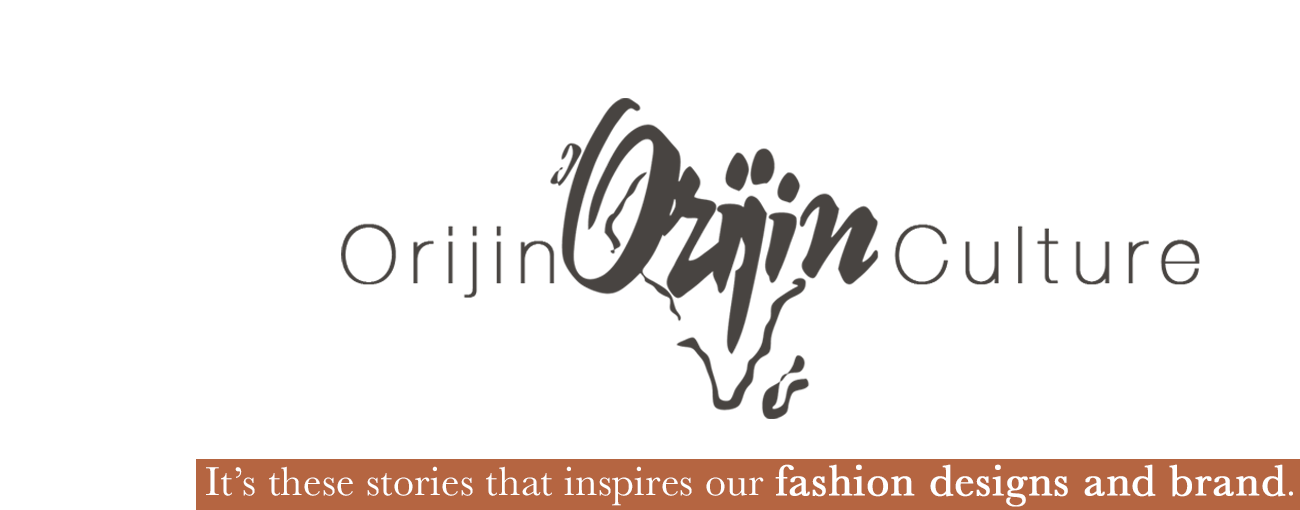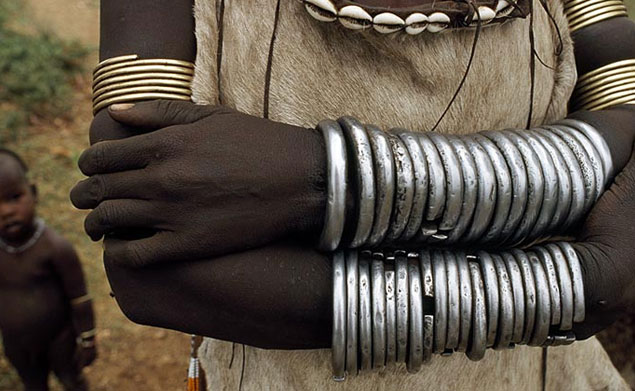
For many parents with newborn children in the Caribbean, it is an expected gift. Thus, shopping for a toddler’s christening or first birthday is not a difficult task. While one appreciates the gesture of the copper or silver, the gold is preferred. Each child wears it until his/her wrist outgrows it, however, it is expected that the child will keep this important piece of jewellery and pass it on to their offspring.
We also see them adorning the wrist of many West Indian women. In addition to being a highly desired piece of fashion jewellery, it also serves as a symbol of social status. The more gold pieces one has, it serves as an indication that she possesses wealth. The current representation of this piece of jewellery is quite ironic given its powerful roots and history.

Most West Indians refer to them as ‘bangles’ however, historically they are known as manillas or okpoho/Okombo/abi. Once a form of currency for West African peoples, manillas would become one of the main currencies of choice during the slave trade to the Americas. Their usage during this time in history was of such prevalence that they were often referred to as “slave trade money.”
While there are many theories surrounding the orijin of manillas, it is known that it was worn by women along the West African coast as a symbol of their husband’s wealth. The horseshoe shaped bracelet or ‘bangels’ are often decorated with balls on each end. In its inception, these bracelets/’bangles’ were predominantly made from copper as it was the “red gold” of Africa. Noticing the importance of this piece of jewellery to West African, Portuguese merchants began to produce these pieces as a means of currency.
Manillas are typically horse-shaped with flared ends. Africans from each region had names for each variety of manila and were very particular about the types they would accept. They valued the Manillas by the sound they made when struck and used them as the dominant form of currency for many things including everyday market purchases, bride price and burials. The main purpose of the manilla – the trading and purchase of slaves- fostered a system where the incoming voyage of Europeans took manillas to West Africa to obtain slaves, who were then taken to the Americas to live a life of bondage. The price of a slave valued in manillas varied depending on the time, place and type being offered.
The demise of the slave trade resulted in the prohibition of manillas as a form of currency. A constant reminder and a tangible symbol of slavery and the slave trade, the British initialled a major recall of all manillas and replaced them with the British West African currency. Many of the existing manillas were collected, confiscated and sold as scrap. Much of it was melted and transformed in other usable goods.
While many of us in the Caribbean know that these “bangels” are somehow linked to slavery and the slave trade, many of us are unaware of the exact history and circumstances surrounding their usage. Although the size and composition of these “bangels” have changed, their form remains the same. What is interesting about their prevalence and usage today, is that they still hold true to its orijinal purpose of being a symbol of wealth. Some might look at the continuation of these pieces in the form of fashion accessories as a way of preserving and honouring their culture and history, however, others might look at it as a reminder of an unfortunate part of African history where Africans sold each other for a piece of metal.



Ndoroba bangle on woman’s arm. Tanzania | ©Biophoto

Courtesy of babilon1271.tumblr.com
Untold story behind Bangles (Manillas) – A “Slave Trade Money” to the must have jewellery
Inspired by Bob Marley’s philosophy “None but ourselves can free our mind”, Orijin is a unique “Culture Brand” connecting all African descendants together through it’s Fashion brand and thought provoking magazine to influence our lifestyles world wide….Don’t just WEAR Culture, SHARE Culture

Latest posts by Nekita (see all)
- Before Rihanna there was Grace Jones - December 27, 2014
- Marimba: Expression of Freedom, yet my Afro-Ecuadorians… - December 25, 2014
- Who Makes Claim to Being the Reggae Capital of the World? - December 24, 2014








